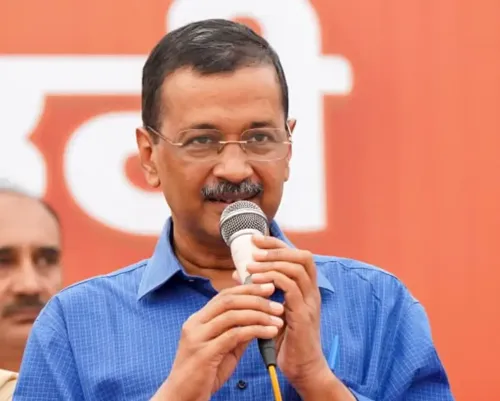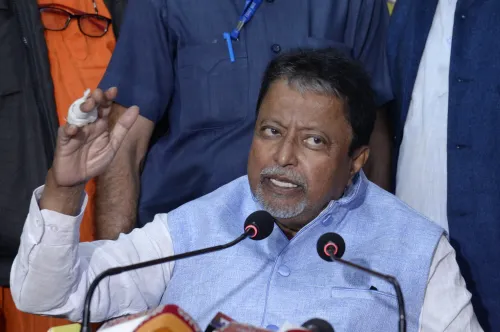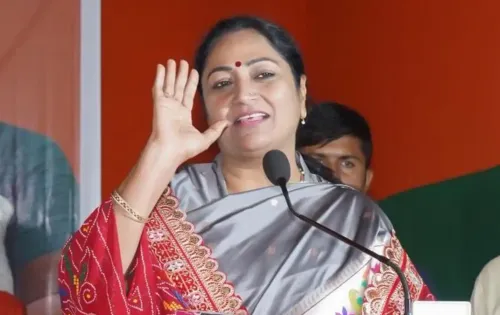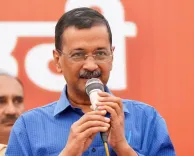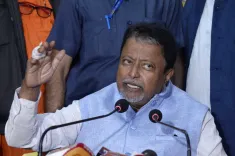How Will Maharashtra Increase Irrigation Capacity to Combat Drought?
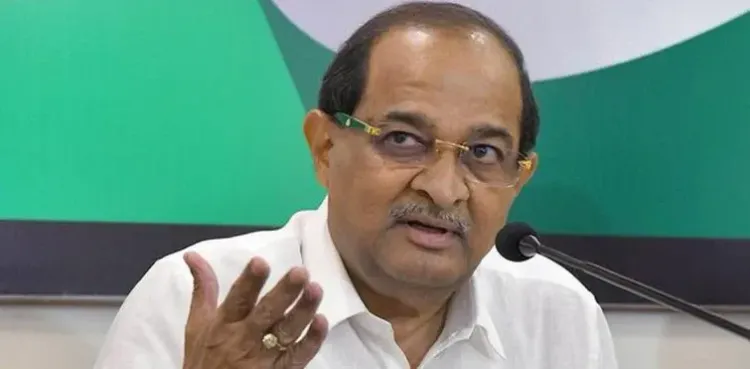
Synopsis
Key Takeaways
- Maharashtra's irrigation capacity is being enhanced to combat drought.
- Plans involve diverting 115 TMC of water for the Krishna Marathwada project.
- The project is estimated to cost Rs 4,000 crore.
- Support from the World Bank is integral to the initiative.
- The Shabari Gharkul Yojana provides housing for tribal families.
Mumbai, July 15 (NationPress) Maharashtra's Water Resources Minister Radhakrishna Vikhe Patil announced on Tuesday during the State Council session that the government is focused on enhancing irrigation capacity to eradicate drought in the state.
In response to inquiries from member Ranjitsinh Mohite Patil, he shared, "Plans are underway to ensure approximately 21 TMC (thousand million cubic feet) of water is accessible for the Krishna Marathwada project. A decision has been made to reroute 115 TMC of water for this project. Additionally, 23.7 TMC will be redirected from Ujani Dam to Dharashiv district, facilitating water supply through lift irrigation in several talukas in the region."
According to Minister Vikhe Patil, the Maharashtra Resilience Development Program (MIDP) is being executed with support from the World Bank, with flood water diversion being a primary component of the scheme, which received approval on March 13, 2024. He mentioned that floodwater will be effectively utilized within two months.
He anticipates the project survey report will be available soon, with completion expected before the next monsoon season. The preliminary estimate suggests transferring around 55 TMC of water from the Krishna valley to the Bhima valley. Details will be shared post-survey.
The estimated cost for this significant infrastructure initiative is about Rs 4,000 crore, and with World Bank financing, there are no outstanding barriers, he added.
He expressed confidence that project tenders will be issued this year.
A new policy for removing silt from dams such as Ujani, Jayakwadi, Koyna, and others is currently in development. This policy will soon be presented to the state Cabinet for approval.
Discussing the barrages in the state, Minister Vikhe Patil stated, "Currently, 24-25 TMC of water flows from Ujani Dam. With a dedicated pipeline for Solapur Municipal Corporation, the riverbed water flow will cease. Thus, 11 new barrages are proposed on the Bhima River to address irrigation issues faced by farmers along the river."
Meanwhile, State Tribal Development Minister Ashok Uike informed the State Legislative Council that the government is dedicated to ensuring that benefits from the Shabari Gharkul Yojana aimed at providing housing for Scheduled Tribe families reach those in the Scheduled Caste community as well.
Responding to a question from member Abhijit Vanjari regarding the Shabari Gharkul Yojana, Minister Uike explained that the initiative primarily supports tribal families who are ineligible for other schemes.
"Beneficiaries receive a total of Rs 1,20,000 under this scheme. This includes Rs 15,000 via Direct Benefit Transfer upon house sanctioning, Rs 45,000 for base construction, Rs 40,000 during roofing, and the remaining amount once the house is complete. Additional funds are available per wages under MNREGA.
The target for the Shabari Gharkul Yojana from 2021-22 to 2024-25 stands at 2,41,670, with 1,80,484 Gharkuls completed and 61,186 still pending as the state government initiates the second phase from April 1.
Minister Uike emphasized that the government is committed to ensuring no tribal family is left without a Gharkul. Delays in some cases are due to technical challenges, space constraints, and migration issues, but these projects will be finished in the second phase.
He noted that individuals residing on encroached land prior to 2011 have had their homes regularized. For those lacking land, financial assistance for land acquisition has been outlined under the Pandit Deendayal Upadhyay Yojana.

